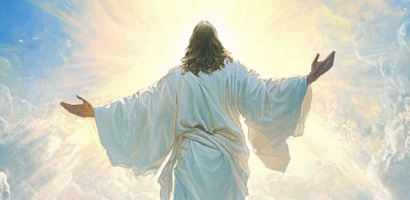ZMAN SIMCHATEINU
Sukkot starts almost immediately after the solemn and sober Days of Awe—the days of trembling and repentance. We finish the fast of Yom Kippur, and on the same night, we start building sukkot – tabernacles. Years ago, I lived in a house with a large common yard and I loved watching my religious neighbors erecting their sukkah in this yard on the evening after Yom Kippur.
Sukkot is the most joyous of the Biblical festivals: if Passover is called the “Season of our Liberation,” and Shavuot is called the “Season of the Giving of our Torah,” Sukkot is simply described as the “Season of our Rejoicing!” In fact we are commanded to rejoice on Sukkot. Why? At first glance there seems to be no reasonable explanation: every other Biblical feast commemorates an event which saved the Jewish people from grave danger that occurred on that particular date (such as Passover, Chanukah, or Purim), but nothing happened on the 15th of Tishrei which would explain the establishment of a holiday on this date. So why is Sukkot so important for God and why is it called zman simchateinu— the season of our joy?
In the Jewish texts, we find two different approaches regarding the symbolism of sukkah. According to the first, a sukkah symbolizes the Divine clouds that God protected His children with in the wilderness—the Clouds of Glory which miraculously surrounded the Jews for the forty years they spent in the desert. According to the second approach, the people of Israel actually built booths in the wilderness to protect themselves, and we are commanded to build sukkot in order to remember these wilderness sukkot we lived in when God took us out of Egypt (Leviticus 23:43). Are these two approaches mutually exclusive? Let us try to reconcile them.
According to Jewish tradition, it is a well-known fact that Moses came back with the second set of tablets on Yom Kippur. On Yom Kippur, God forgave His people after their terrible sin. However, it is only at Sukkot, that God’s presence came back to abide among His people; it’s only at Sukkot that those Divine clouds covered the hand-made booths. This is the mystery and the joy of Sukkot – the mystery and the joy of God’s return and of renewed fellowship. That is why Sukkot is indeed the holiday of divine intimacy and divine presence; that is why Sukkot is called zman simchateinu, the season of our joy—because God, in His mercy, came to tabernacle with His people!
PROPHETIC HAFTARAH
If you are still not convinced of the prophetic meaning of this amazing Feast, listen to these words of Scripture – words that are read in every synagogue every Sukkot. The Haftarah for the first day of Sukkot is taken from Chapter 14 of the book of Zechariah (Zech.14:1-21). It discusses the Day of the Lord, the war of “Gog and Magog,” which the rabbis say will take place on Sukkot, and everything that happens afterwards, at the end of the days. As I’ve mentioned, this text is read in every synagogue during the Feats of Tabernacles, and it was probably also read during the Feast at the time of Jesus. It’s difficult to imagine a scripture that would reflect more powerfully the prophetic nature of this Feast. Here is just the beginning of this chapter:
1Behold, the day of the Lord is coming,
And your spoil will be divided in your midst.
2 For I will gather all the nations to battle against Jerusalem;
The city shall be taken,
The houses rifled,
And the women ravished.
Half of the city shall go into captivity,
But the remnant of the people shall not be cut off from the city.
3 Then the Lord will go forth
And fight against those nations,
As He fights in the day of battle.
4 And in that day His feet will stand on the Mount of Olives,
Which faces Jerusalem on the east.
And the Mount of Olives shall be split in two,
From east to west,
Making a very large valley;
Half of the mountain shall move toward the north
And half of it toward the south…
THE WATER AND THE LIGHT
In the Gospel of John, we find a famous saying of Jesus: “He who believes in Me, as the Scripture has said, out of his heart will flow rivers of living water.”[1] Jesus cried these words out “on the last and great day” of the feast of Tabernacles. Why did Jesus speak of water? Was there anything in the celebration of Sukkot that was connected to water that would explain Jesus’ use of this image?
In the days of the Second Temple, the height of the Sukkot celebration was the water libation ceremony. Sukkot is the beginning of the rainy season in Israel, and the libation of water was performed to invoke God’s blessing on the year’s rains. During the ceremony, a large procession ascended to the Temple, led by a priest who bore a special golden vessel filled with the sparkling spring water. The water was then poured onto the altar. During this ceremony, the lamps were lit in the Temple courtyard as a sign of the festivities. It was a very joyful procession, indeed.
The sages of Israel testify to the celebrations of the water libation from the days of the Second Temple, and the description of this ceremony can be found in the Mishna. The Talmud states that “one who has not witnessed the Festival of the Water Drawing (held on the nights of Sukkot in the Holy Temple) has not seen joy in his lifetime!” Jesus uses the images of this celebration, to illustrate his words. Once we understand this context – once we understand that the Light and the Water motif played a significant role in the celebration of the Feast Tabernacles – the words of Jesus acquire a more profound and rich meaning. It is in the context of this celebration, while the procession with water was walking through Jerusalem, that Jesus says His famous words about “living water”. It is in the context of this celebration, while all Jerusalem was glowing with the light from the Temple, that Jesus also spoke these words: “I am the light of the world.”[2]
[1] John 7:38
[2] John 8:12








This is WONDERFUL! It made me joyful with & for you, as I read your post, Julia. Blessings,
Jane Mazzola
Shalom, Julia
As always you have done a great job especially with the Gospel of John (Jhn 7:38 & Jhn 8:12).
Thankyou